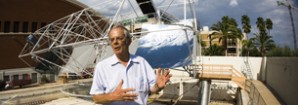Spotlight
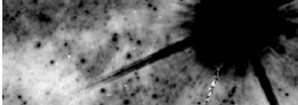
Finding the Progenitor of the Supernova in Cen A Using MagAO
"A week ago (February 8), a bright supernova, SN 2016adj, appeared in the active galaxy NGC 5128 (Centaurus A). Classified as Type IIb, its progenitor is believed to be a very massive star in a binary system, undergoing a significant mass loss before explosion. However, direct identification of the progenitor remains challenging. Since SN 2016adj is only 4" from a bright foreground star, it is an ideal target for Arizona's Magellan Adaptive Optics system and its visible AO camera. Steward Observers Jared Males, Laird Close, and Katie Morzinski observed the supernova on February 13. Steward grad student Ya-Lin Wu compared the new MagAO image to archival HST and VLT data, and we were able to identify a possible progenitor star. Notably, this is the 5th Type IIb progenitor identified in pre-explosion images over the past 20 years. Yesterday we posted our results on the Astronomer's Telegram." You can find the link HERE and the blog from which these words were excerpted (with permission) HERE.
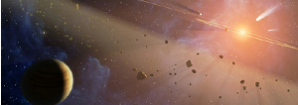
What SOFIA Observations Tell Us About Planetary Debris Disks
Steward Scientist Kate Su will be holding a press conference at the AAS meeting Jan 7. The title is "What SOFIA Observations Tell Us About Planetary Debris Disks." Here is the meeting abstract for her Friday AAS talk. We will have the press release when it's available.
Oral Talk: Nature of the Warm Excess in eps Eri: Asteroid belt or Dragged-in Grains
Kate Y. Su, George Rieke, Massimo Marengo, & Karl R. Stapelfeldt
Epsilon Eri and its debris disk provide a unique opportunity to probe the outer zones of a planetary system due to its young age (roughly 1 Gyr) and proximity (3.22 pc, the closest prominent debris disk by more than a factor of two). It is the Rosetta Stone for more distant exoplanetary debris systems and thus critical to understanding the mid-term evolution of our Solar System. From resolved images in the far-infrared and submillimeter along with spectra from 10-35 and 55-95 microns, the eps Eri disk was suggested to have a complex structure, with multiple zones in both warm (asteroid-like) and cold (KBO-like) components. Alternatively, the warm excess can also originate from small grains in the cold disk, which are transported inward by the combination of Poynting-Robertson and stellar wind drags. Here we present a SOFIA/FORCAST 35 micron image of the system, and provide additional constraints on the nature of the warm excess inferred from previous Spitzer and Herschel observations.
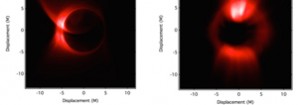
Invited AAS Talk on Event Horizon Telescope
Professor Feryal Ozel gave a plenary talk at the American Astronomical Society Meeting on Jan 6, entitled "Black Hole Physics with the Event Horizon Telescope." The abstract of her talk follows:
The Event Horizon Telescope is an experiment that is being performed on a large and ever-increasing array of radio telescopes that span the Earth from Hawaii to Chile and from the South Pole to Arizona. When data will be taken with the full array, it will image the event horizons of the supermassive black hole at the center of our Galaxy, Sagittarius A*, and the black hole at the center of M87, with an unprecedented 10 microarcssecond resolution. This will allow us to take the first ever pictures of black holes at 1.3 and 0.85 mm wavelengths and look for the shadow that is a direct evidence for a black hole predicted by the theory of General Relativity. In addition, the Event Horizon Telescope will also enable us to study the process by which black holes accrete matter and grow in mass. I will discuss the theoretical developments in simulating the properties of the black hole accretion flows and their expected images using state-of-the-art algorithms and high performance computing. Interpreting the upcoming observations within this theoretical framework will open new horizons in black hole astrophysics.
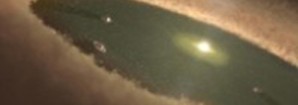
The First Images of Planets in the Process of Formation
Steward astronomers have imaged forming planets for the first time. Steph Sallum and Kate Follette, working with Josh Eisner and Laird Close, observed the young star LkCa 15 using the Large Binocular Telescope and the Magellan Adaptive Optics system. LkCa 15 hosts a transition disk - a protoplanetary disk with an inner, solar-system-sized clearing. In the clearing they detect three points of light in the infrared, one of which is also seen in the visible, Hydrogen-alpha (H-alpha) emission line. The companions' infrared brightnesses agree with those expected for forming planets, and the H-alpha detection directly traces shocked hydrogen gas falling onto one of the protoplanets. The source positions, compared to previous observations taken at Keck, are consistent with circular orbits aligned with the outer disk. LkCa 15 is the first system in which astronomers can observe planet formation processes directly. You can see the UA press release HERE. The accepted journal article is at "Nature, vol 527, 342-344 (Nov 2015)." The Arizona Daily Star article can be foundHERE.
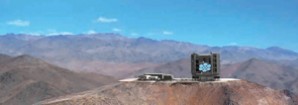
Several Reports on Giant Magellan Groundbreaking
Several reports on the GMT groundbreaking follow, starting with the Arizona Republic page. Space.com has a lengthy story as well. Other stories come from CBS, Ars Technica, and Tech Insider.
Pages

For Public
Public events include our Monday Night Lecture Series, world-reknowned Astronomy Camp and Mt Lemmon Sky Center.

For Students
A good place to start if you want to become an undergrad major or grad student, or need to find our schedule of classes.

For Scientists
Find telescopes and instruments, telescope time applications, staff and mountain contacts, and faculty and staff scientific interests.



